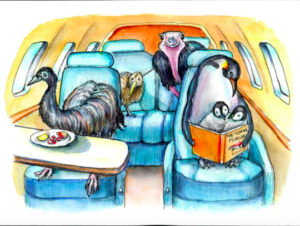A Response to Gills Main Aim
Progymnasmata: Proverb
Americans are stupid, crass, ignorant, soul-less, naïve oafs without attention, irony, or intellect. These same people will use every comforting, clever, and ingenious American invention, will demand America’s medicine, wear its clothes, eat its food, drink its drink, go to its cinema, love its music, thank God for its expertise in a hundred disciplines, and will all adore New York.
In recent times people are quick to trash America. I suspect it is because critically analyzing the challenges the States faces is too difficult, so their solution is to trash talk Americans and use them as a scapegoat. People outside of America seem to be extremely critical of what we do and how we do it. Funny, because most of the time they only offer cynicism and no constructive feedback. Somewhat like a bully in the third grade. Even though I am praising the point above, I completely understand that America faces real obstacles and could improve on many structural aspects of our country. However, people often forget the tremendous accolades America has produced. They reap the benefits from our scientific discoveries, and cultural exports, yet they seem to sit on a high horse above it all, while they feed it a Big Mac and scroll through the internet. I remember while traveling through Southeast Asia, people would ask where I’m from. The moment I said the states I was then an ambassador for all Americans forced to go to defend the many issues people were consumed with. At first I agreed with most foreigners, but after a while I started to argue for the greatness of the States tooth and nail. How could I betray the place that raised me and gave me everything I am today? The best response I started to come up with was simply nodding my head and then asking, “Why do you care so much about what we do in the States?” Their response was often because we are so darn terrible, but I always tried to say, “You care because of how important we are. You care because America’s decisions affect the world, when was the last time people cared so much about your country?” It was a very arrogant response, but also very American. Gill goes on to mention that Europeans love to turn their nose at smelly Americans, yet our decisions historically and today still affect their lives. But sadly Americans seem to do that too. There is a lack of gratitude for what this country gives the world. Again I do not want to negate the palpable and massive issues America needs to fix. Although, I believe what Gill is pointing out is there needs to be some gratitude or validated patriotism for the States. He nor I am saying to blindly support this country while belting the star spangled banner, but think critically about what the States has done and given you. Be as critical as you want, but have it be constructive criticism. Stop trashing the states because it makes you feel smart, educated, and above it all.
